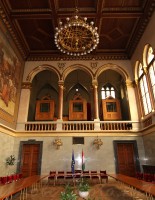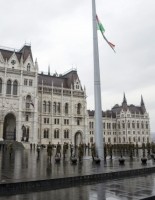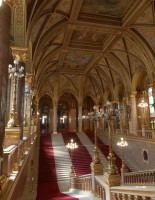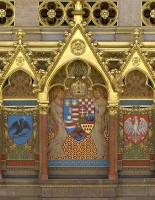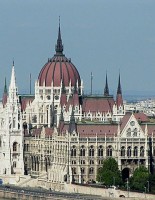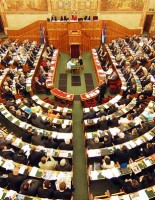Parliament
The building of Hungary's law-making body, the House of Parliament, is rightly considered among the most beautiful parliaments buildings in the world. Selected as a World Heritage site as a central element in the Danube panorama in 2011, the edifice is not only an invaluable treasure, but also the pride of the nation. It provides a home for the legislature, a place of safekeeping for the Hungarian Holy Crown, and a workplace both for the 199 Members of Parliament and for the nearly 600 people who assist them. Currently, the building also houses the offices of the Prime Minister and his support staff.
The impressive building that was erected over a period of seventeen years, primarily in the late nineteenth century (1885–1902), has come to be the symbol of Hungary and the capital. It was built in a period of truly dynamic economic growth in the country. The era saw the simultaneous construction of Heroes' Square, Andrássy Road, the Western Railway Station and a number of bridges over the Danube as well as the opening of the first underground railway on the continent. Amid all these achievements, the erection of the House of Parliament can still be considered the greatest domestic undertaking of the period, which, in and of itself, had an impact on economic development. During its construction, it was the express intention to make the building out of Hungarian materials with the work of domestic craftsmen and manufacturers, while reflecting the vegetation of the surrounding Carpathian Basin in its ornamentation. No expense was spared when it was erected; indeed, a total of some 40 kilogrammes of exclusively 22- to 23-carat gold was used for decoration. Architect Imre Steindl, the visionary designer of the building, and numerous artists and master craftsmen of his age, gave expression to the strength and self-confidence of the Hungarians at the time with this unique edifice.
The shaping of the House of Parliament grew out of conscious choices of symbolism and carries important historical and political messages. Viewing it from the side of the Danube, we see the halls of the lower and upper houses rise on both sides of the dome surrounded by turrets, which evoke the memory of the bicameral parliament that was in operation when the building was being constructed. The two halls are completely identical in size and shape, thus expressing the equality between the representative lower house and the historical upper house. The dome rising between them signifies the unity of the legislature as well as serving as the venue for joint sittings of the two chambers.
